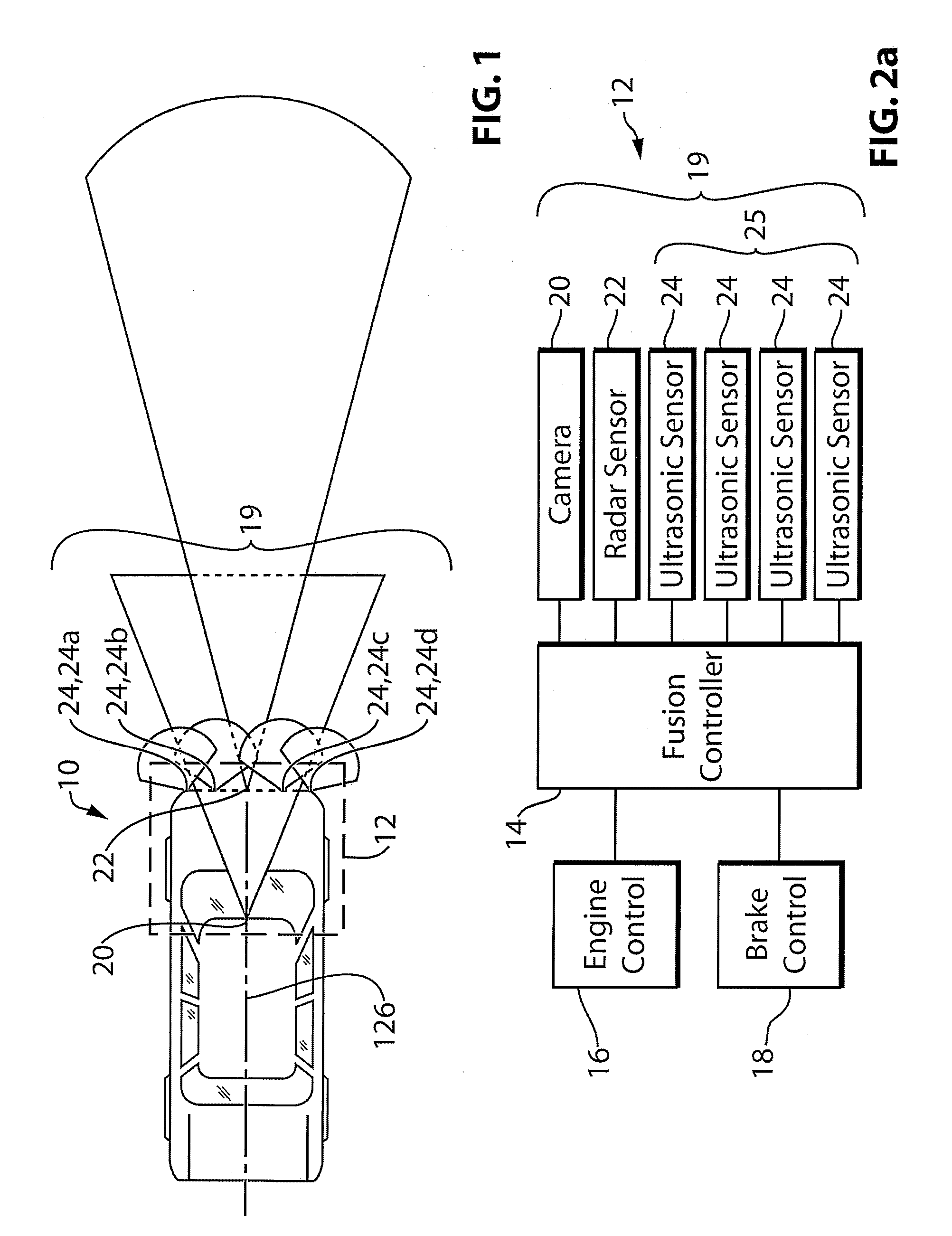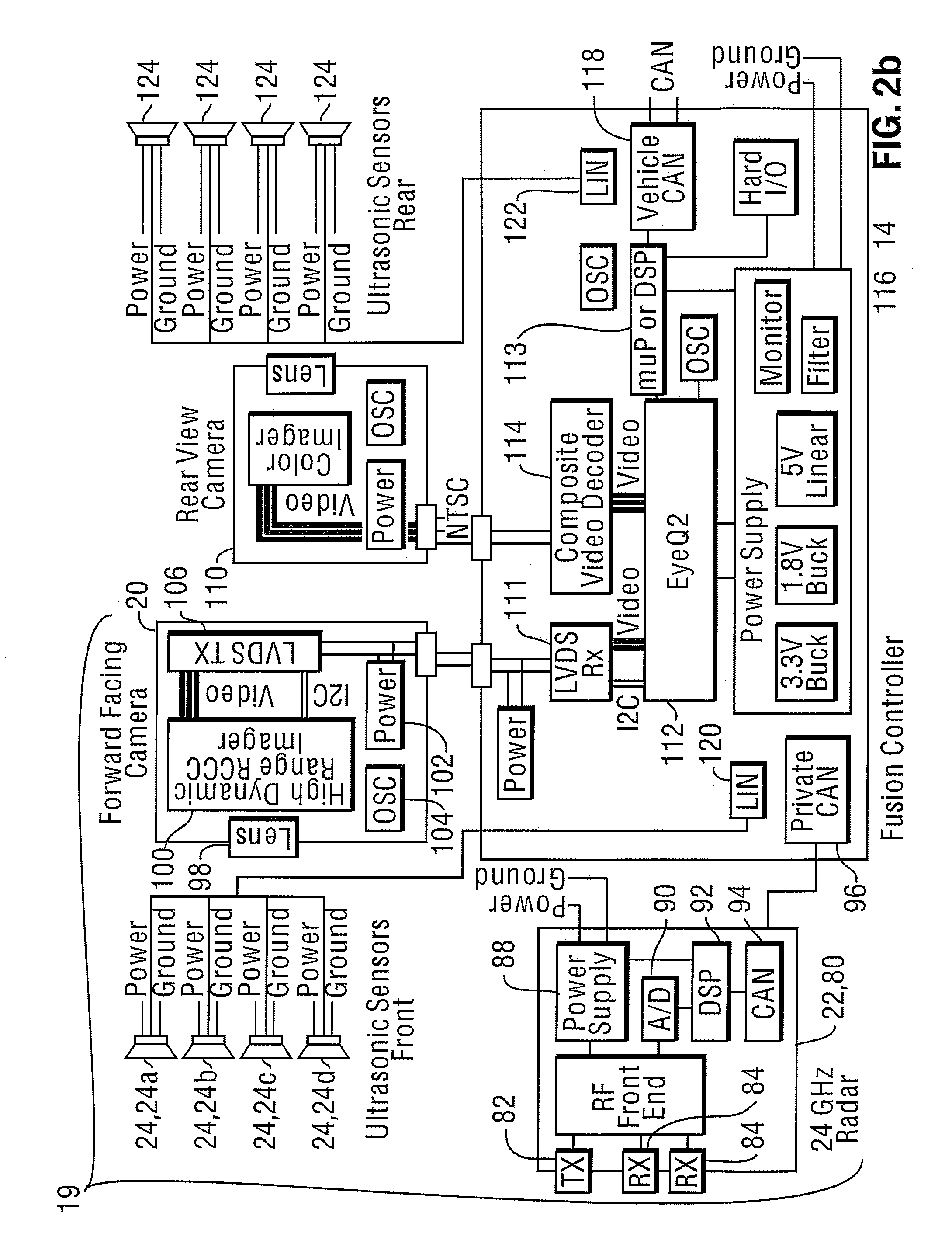Full speed range adaptive cruise control system
a cruise control system and full-speed range technology, applied in the direction of television systems, using reradiation, instruments, etc., can solve the problems of over-exceeding the accuracy requirement of follow-to-stop acc exceeds the capability of traditional long-range sensing systems, and the general limitation of adaptive cruise control systems
- Summary
- Abstract
- Description
- Claims
- Application Information
AI Technical Summary
Benefits of technology
Problems solved by technology
Method used
Image
Examples
Embodiment Construction
[0028]Reference is made to FIG. 1, which shows a host vehicle 10 with a full speed range adaptive cruise control system 12, which may also be referred to as a follow-to-stop adaptive cruise control system, in accordance with an embodiment of the present invention. Selected electrical components from the adaptive cruise control system 12 are shown in a simplified format in FIG. 2a. The adaptive cruise control system 12 includes a main controller 14 which may be referred to as a fusion controller, a fusion module or a fusion processing module, an engine controller 16, a brake controller 18, and a plurality of sensors 19, including a camera 20, a long-range sensor 22 and a plurality of short-range sensors 24 that are part of a short-range sensing system 25. The main controller 14 sends instructions to the engine controller 16 and to the brake controller 18 (ie. the main controller 14 is operatively connected to the engine and brake controllers 16 an 18) based on input from the camera 2...
PUM
 Login to View More
Login to View More Abstract
Description
Claims
Application Information
 Login to View More
Login to View More - R&D
- Intellectual Property
- Life Sciences
- Materials
- Tech Scout
- Unparalleled Data Quality
- Higher Quality Content
- 60% Fewer Hallucinations
Browse by: Latest US Patents, China's latest patents, Technical Efficacy Thesaurus, Application Domain, Technology Topic, Popular Technical Reports.
© 2025 PatSnap. All rights reserved.Legal|Privacy policy|Modern Slavery Act Transparency Statement|Sitemap|About US| Contact US: help@patsnap.com



